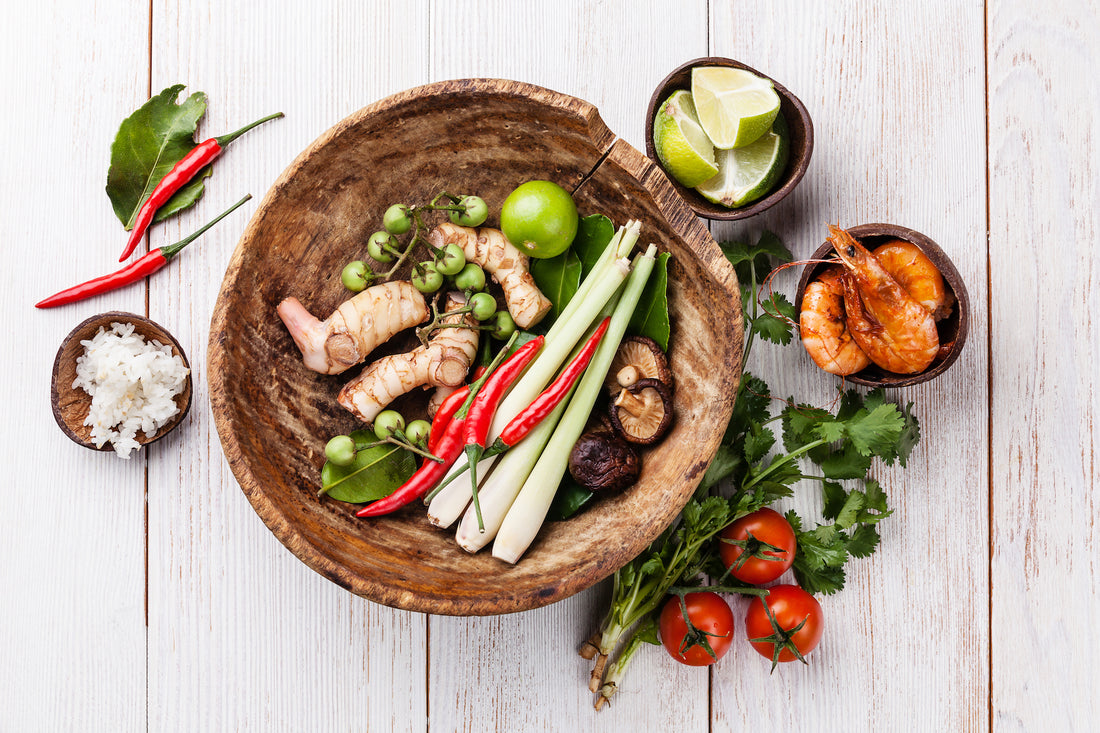While most are familiar with the picturesque beaches and islands of southern Thailand, this remarkable country is a lot more diverse than you’d expect. Here, the Tourism Authority of Thailand tells us what makes this country’s four main regions so special. With the ethnic diversity, dialect, customs, and of course, cuisine, of each of its various regions, Thailand offers so much more than your standard curry or papaya salad. Read on to learn more about the culinary differences between Thailand’s four major regions. (Courtesy of Tourism Authority of Thailand)
Central Thailand
Home to Damnoen Saduak, the famous floating river market just west of the capital of Bangkok, Central Thailand sees the convergence of many of Thailand’s great rivers, making the area quite fertile and ideal for growing rice. Cuisine from Central Thailand tends to be mild, salty, sweet, and sour—all at the same time. For example, steamed jasmine rice is often served with different types of soup (like tom yum goong, shrimp soup with lemongrass) or chili dipping sauces (called nam phrik). Tofu, ground pork, and green squash showcase China’s strong culinary influence.
Northern Thailand
Much of Northern Thailand, especially near Chiang Mai, is made up of jungle-covered mountains and valleys that are home to various hill tribes. Food tends to be spicier than in the south, herbal, salty, and sour, but almost never sweet. Typical dishes include nam phrik oong, sticky rice with steamed vegetables, naem, a fermented minced pork sour sausage that is steamed and wrapped in banana leaf, and noodle-based dishes like khao soi, made with egg noodles that are often eaten with chicken or beef curry. Thanks to the region’s cooler climate, soups and curries as well as a larger variety of vegetables, roots, and herbs are very common.
Northeast Thailand
Isan, or the northeast region of Thailand, is a high plateau with porous soil and low rainfall. Food in this area is simple and traditionally eaten on a bamboo table called pa kao. Many dishes also feature sticky rice and a spicy dipping sauce made from fermented fish and chilis, known as nam phrik pla ra. Somtum (papaya salad), made by pounding green papaya with lime juice, garlic and fish sauce, is the region’s signature dish. Another favorite is kai yang, or grilled chicken, prepared with garlic, coriander root, black pepper, and fish sauce slow-cooked over hot charcoal.
Southern Thailand
Southern Thailand tends to differ dramatically in both scenery and culture from the rest of Thailand. Craggy limestone mountains and lush jungle lands, in addition to stretches of sandy beach are some of the more familiar images we’ve come to associate with this region. Nearly eight months of rainfall make for very fertile land. Coconut plays a prominent role in southern Thai cooking, giving many foods a tropical island feel: coconut milk thickens soups and curries; coconut oil is ideal for frying; and coconut meat is delicious grated fresh or used as a condiment. The region is bordered by large bodies of water, so it’s no surprise that locals eat plenty of seafood.
Each of the four major regions of Thailand have their own distinct way of life, culture, and cuisine. It’s this diversity that makes Thailand such an incredible culinary destination. The Thailand Box offers a glimpse into this heritage—and it’s sure to whet your appetite for more.






